On May 23rd, the Museum of the City of New York premiered an exhibition that focuses on ways that the HIV/AIDS epidemic has impacted the lived experiences of New Yorkers, and tells the stories of the individuals and activist groups that responded to the crisis. Entitled “AIDS at Home: Arts and Everyday Activism,” the exhibition pays tribute to the many people whose lives were compromised by the disease, as well as all those who dedicated themselves to supporting those affected.
First identified by scientists in 1981, HIV/AIDS ended the lives of over 67,000 people in New York City alone. The disease was also accompanied by a social stigma that led to a spike in homelessness and isolation. While these tragic events were unfolding, many people were fighting against them, creating moving and influential works of art and forming powerful resistance movements whose effects continue to empower the city today. This exhibit approaches the topic by taking a creative and emotional look at how the artistic and activist community responded to the AIDS crisis by reimagining concepts of family and homemaking.
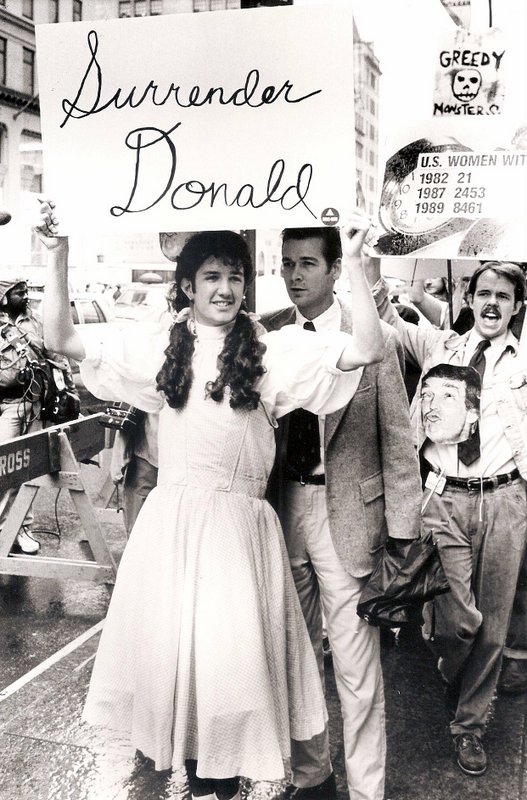 CT UP/Trump Tower Demonstration ‘Dorothy’ Protests Donald Trump. Photograph by Lee Snider via Museum of the City of New York.
CT UP/Trump Tower Demonstration ‘Dorothy’ Protests Donald Trump. Photograph by Lee Snider via Museum of the City of New York.
The museum exhibit is divided into three parts, the first focusing on caretaking. Care took many forms during the HIV/AIDS epidemic, and this time period led to the foundation of the Gay Men’s Health Crisis. Established in 1982, this organization still focuses on enabling everyone affected by HIV/AIDS to live a fulfilling life. Other organizations, including Housing Works, were also formed during this time. This section highlights these foundations and other acts of care through a selection of artifacts, newspaper clippings, and art.
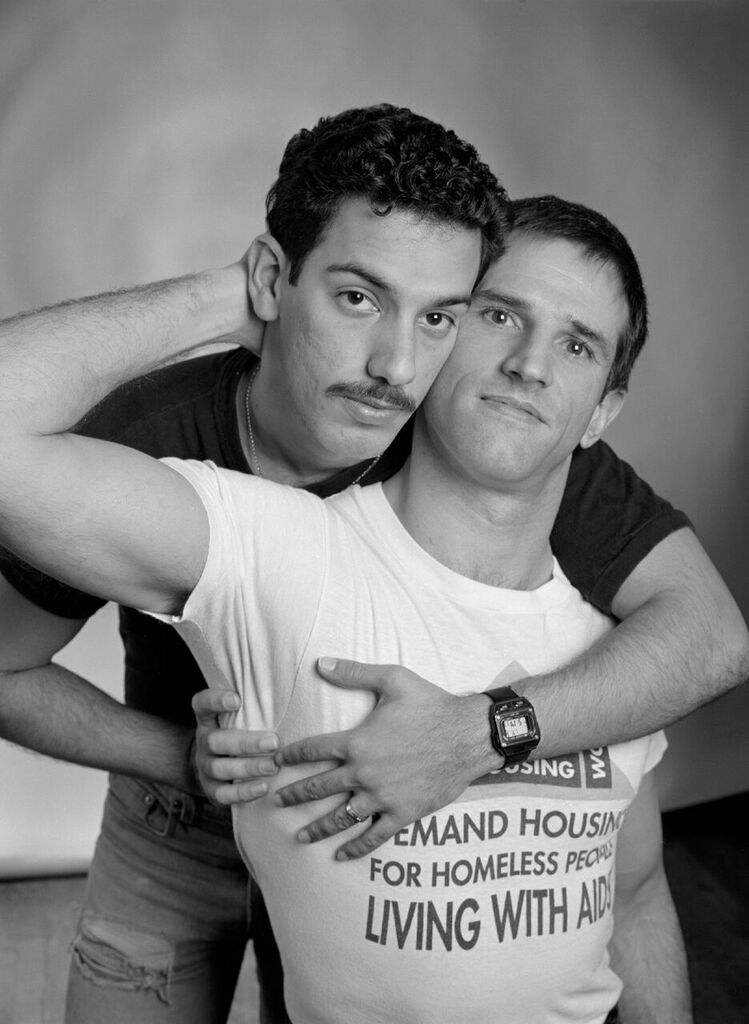 Eric Sawyer and Luis Lopez Detres, photographed by Bill Bytsura (1990). Image via Museum of the City of New York
Eric Sawyer and Luis Lopez Detres, photographed by Bill Bytsura (1990). Image via Museum of the City of New York
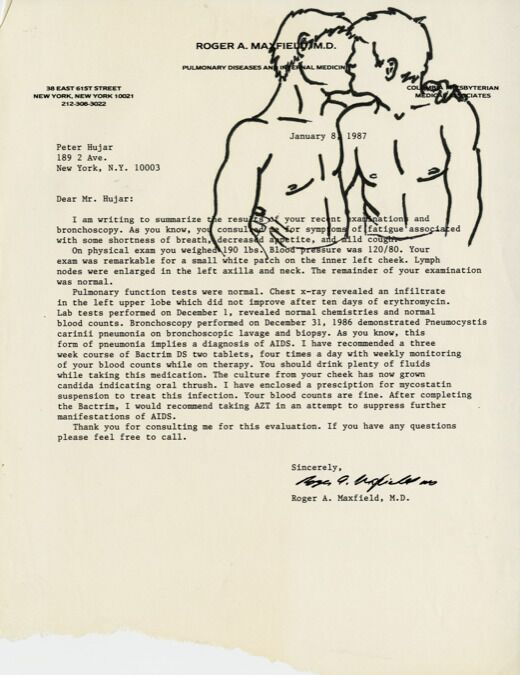 Peter Hujar’s diagnostic letter altered with a drawing of two men kissing. David Wojnarowicz (1987). Image via Museum of the City of New York.
Peter Hujar’s diagnostic letter altered with a drawing of two men kissing. David Wojnarowicz (1987). Image via Museum of the City of New York.
The second part of the exhibition focuses on organizations that emerged to combat the upsurge in housing crises and homelessness that occurred during the epidemic.
The third part centers on family, and specifically focuses on the legal actions taken to make sure that LGBTQ+ families and communities could receive and provide the support they needed. The final part addresses the prevalence of HIV/AIDS in today’s world, and it includes a documentary that focuses on three contemporary activists whose work continues to tell stories of and provide support for those affected by the disease.
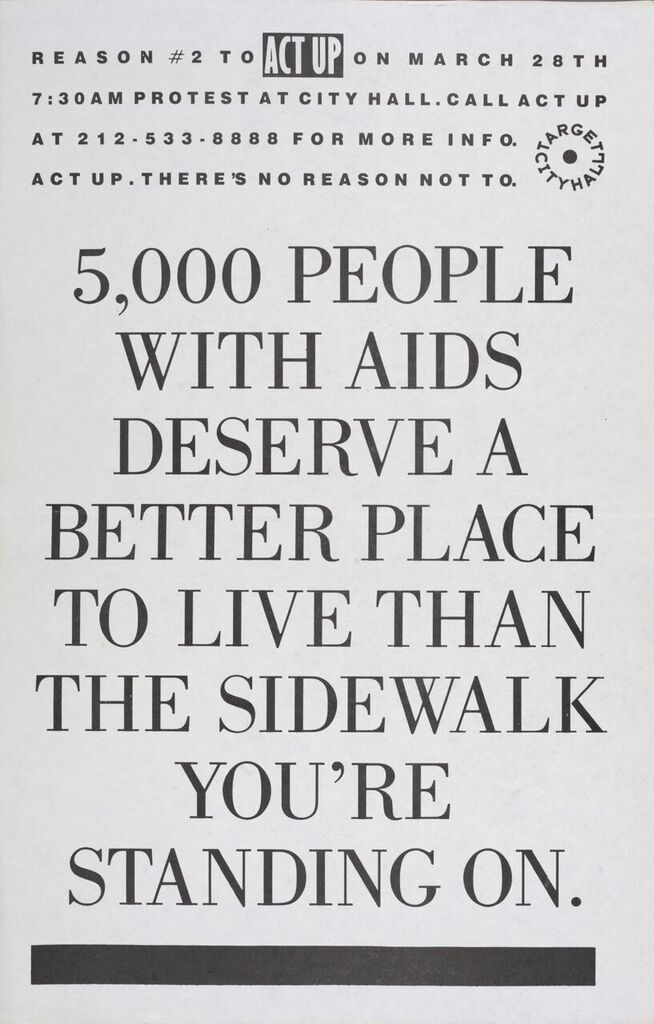 “Reason #2 to ACT UP on March 28th … 5,000 People with AIDS Deserve A Better Place to Live than the Sidewalk You’re Standing On” poster (1989). Image via Museum of the City of New York.
“Reason #2 to ACT UP on March 28th … 5,000 People with AIDS Deserve A Better Place to Live than the Sidewalk You’re Standing On” poster (1989). Image via Museum of the City of New York.
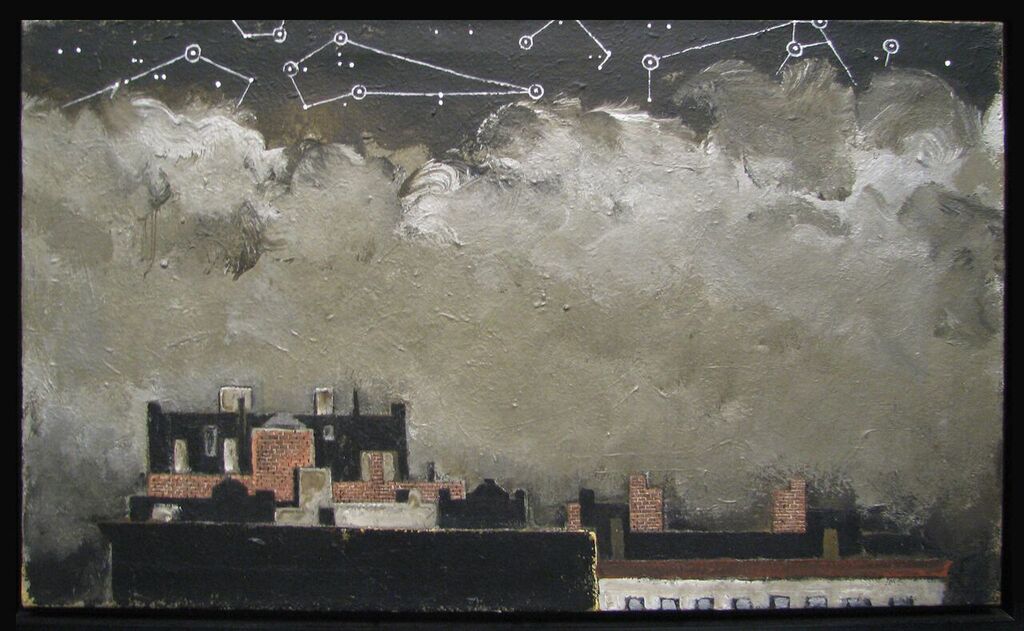 Untitled by Martin Wong (1995)
Untitled by Martin Wong (1995)
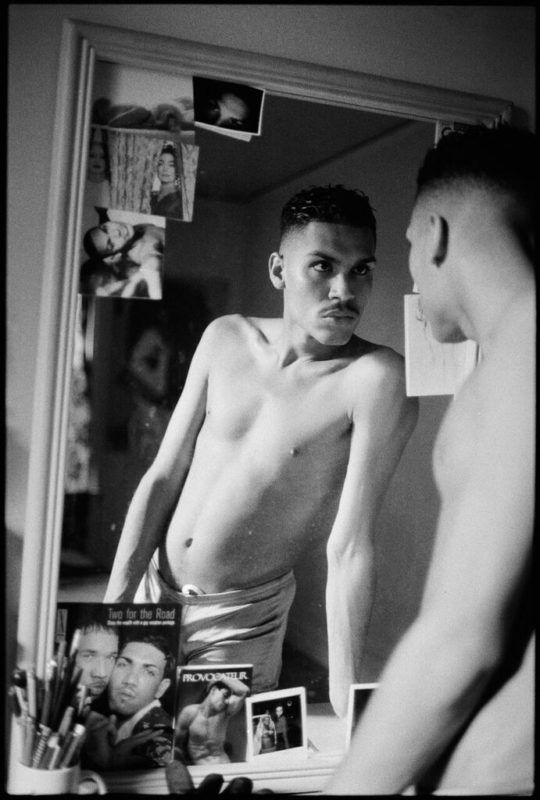 “Reality Sets In” by Luna Luis Ortiz (1996)
“Reality Sets In” by Luna Luis Ortiz (1996)
The exhibition includes additional work from over 20 artists, including Nan Goldin, Kia LaBeija, and Hunter Reynolds. It tells a story of the HIV/AIDS epidemic as it was experienced, in bodies and apartments, on the streets and in the theaters and the hospitals. These places, people, and things are often overlooked, but all played and continue to play vital roles in combatting the disease and improving the quality of life for all those affected by it.
The exhibit will be at the Museum of the City of New York through October 22nd, 2017.
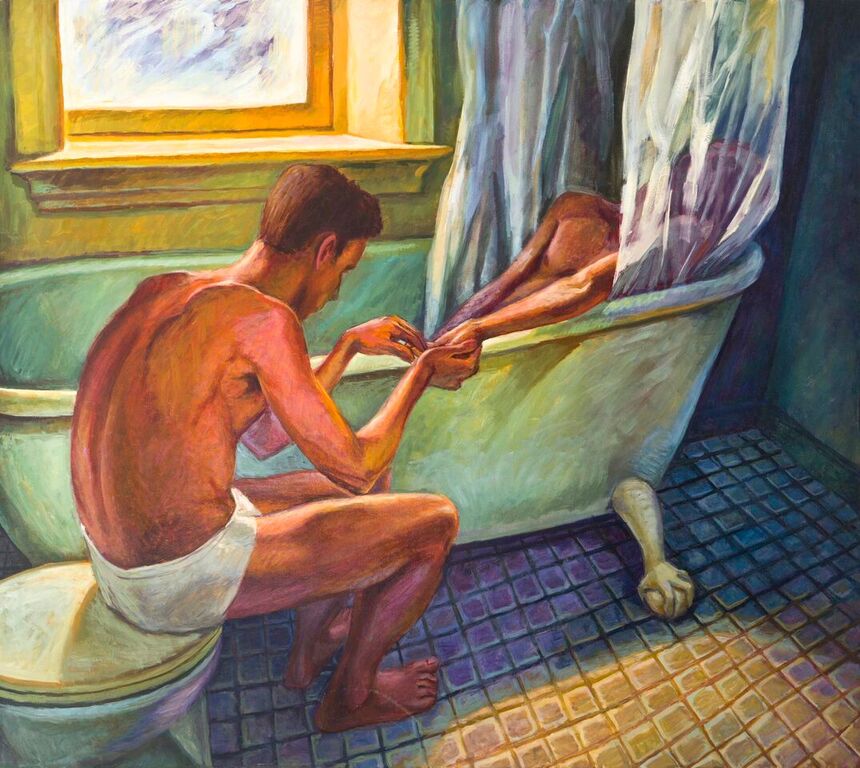 “Bath Curtain” by Hugh Steers (1992). Image via Museum of the City of New York.
“Bath Curtain” by Hugh Steers (1992). Image via Museum of the City of New York.
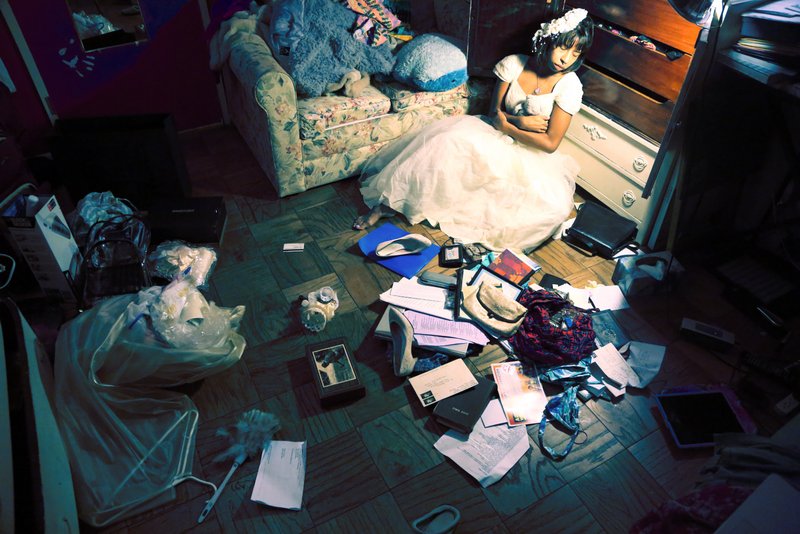 The First Ten Years. Photo by Kia Labeija. Image via Museum of the City of New York.
The First Ten Years. Photo by Kia Labeija. Image via Museum of the City of New York.
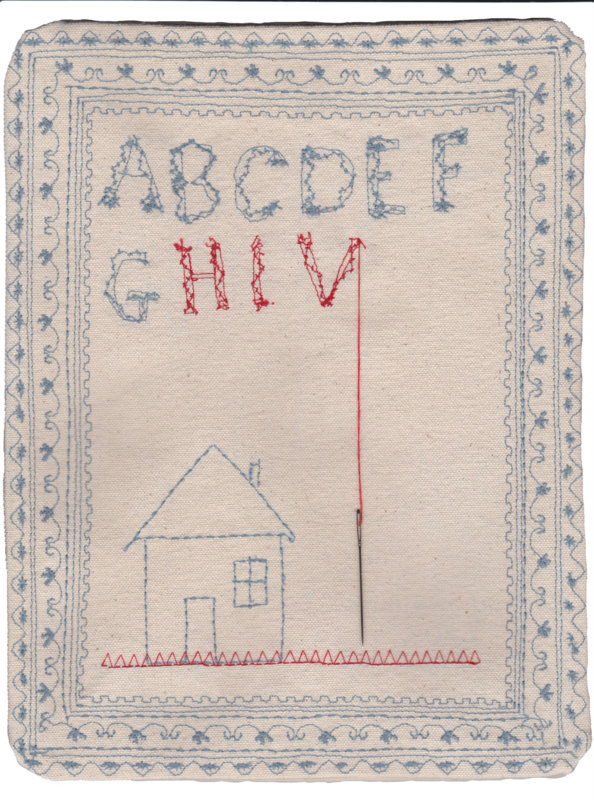 HIV Sampler by Jeffrey Scott Wilson (2013). Image via Museum of the City of New York
HIV Sampler by Jeffrey Scott Wilson (2013). Image via Museum of the City of New York
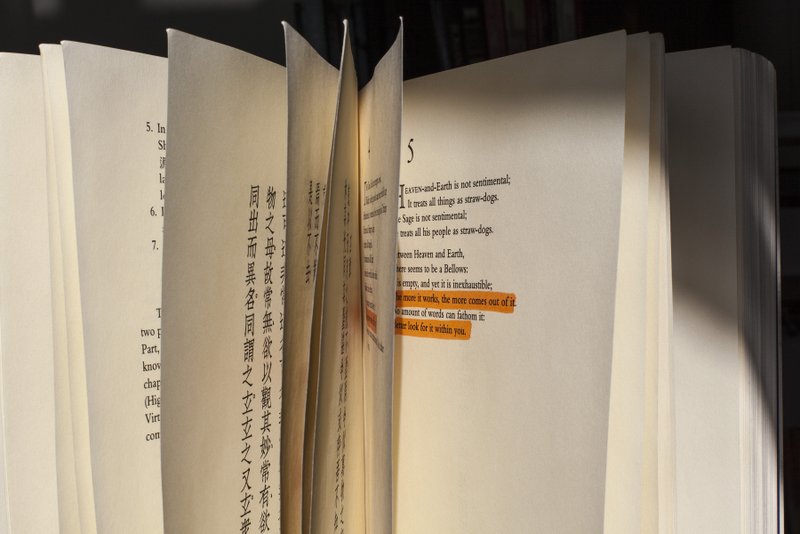 Text pages highlighted by Marc Grinker who was diagnosed with HIV in 1985 and died of AIDS in 1996. Image via Museum of the City of New York.
Text pages highlighted by Marc Grinker who was diagnosed with HIV in 1985 and died of AIDS in 1996. Image via Museum of the City of New York.
While at the Museum of the City of New York, don’t miss the exhibit New York at its Core, showcasing 400 years of NYC history.






